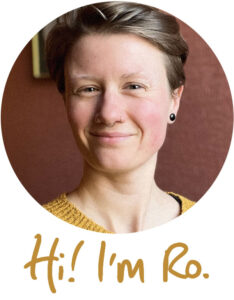How To Turn Conflict into Deeper Connection – Part 3: Approaching Conflict with Love

This is the final part of a series of three posts about how we can use conflict to serve our relationships, instead of seeing it as a threat to closeness. I recommend reading part one and part two first if you haven’t already done so.
In part one of this series, we looked at the different ways many of us avoid conflict. In part two I gave an idea of what authentic connection could look like as an alternative to the way many of us approach conflict in our relationships, as well as some steps for how we might begin to move more in that direction. Today, I’m going to continue talking about ways that we can begin to approach conflict in a more loving way.
The thing is, most of us have not had loving conflict modelled to us. Most of us have experienced conflict where everyone is coming from a place of fear: needing to be right, needing to defend a position or exert dominance, needing a specific outcome. Whether in outright anger or in more subtle, passive-aggressive ways, these behaviours show up when we are scared, angry, or upset. No wonder we generally try to avoid conflict altogether.
There is an alternative to this, which allows us to foster deeper connection, and it requires us to approach conflict from a place of love. To do this, we need to be able to move through the more difficult feelings so that we’re not acting from our aggression or fear. This may take time, whether several hours or a day or two, or perhaps longer. It may involve letting some anger move through physical exercise, or processing some fear or sadness with a friend who isn’t involved in the conflict. The aim is to find the sweet spot where the topic is still feeling alive and important to you and you’re connected to the initial feelings it brought up, and you have moved through the strongest of those feelings so that you can also access curiosity and a genuine desire to reconnect for its own sake. It can take a little time and practice to find this balance – notice, for example, if you habitually wait for the feelings to pass, and then tell yourself it doesn’t matter anymore!
Approaching conflict with love means love for yourself as well as the other person, and sharing how you really feel is an act of self-love. Showing love for the other person means allowing them to be themselves, assuming the best possible intentions for their behaviour, and aiming to check any assumptions you have made about them to counter the inevitable tendency to make judgements. In sharing more about how you feel, you’re also showing love for the relationship between both of you, because connection and intimacy depend on both people sharing themselves with each other.
Crucially, approaching conflict with love means that you’re sharing how you feel with the other person – even if those feelings include anger, upset, or frustration – because you want to feel closer and create more connection, not because you want the other person to change or you want to hurt them back. The flip side of this is a genuine desire for the other person to also feel heard, for the same reason. When you can come to a conflict from this place, it’s a very different experience. You create the conditions that allow you both to connect to each others’ humanity, rather than your judgements about each other.
This is the place where, if you’re both really listening, you can learn a lot more about what the other really values, what’s really important to them. And that’s often a place that you come away from feeling much more deeply connected afterwards.
In one example, when a friend had said something that brought up some difficult feelings in me, this allowed me to say something like, “I felt upset when you said that – would you help me understand why you hold this view so that I can better understand what’s important to you?” Instead of “You were being pretty inconsiderate when you said that, it made me really upset.”
Which would you rather have heard?!
After that conversation, I knew my friend a little better and I’d shared my feelings in a way that they could receive without being triggered into defensiveness. I don’t always manage this, but it feels like magic when I do.
There’s an important caveat to be aware of here. Sometimes, this process is not possible. Sometimes you’re engaging with a person who does not have the resources, awareness, or desire to meet you in this place of understanding, and to try to get them to be in a place where they could do this with you (without their explicit and enthusiastic buy in) would be trying to change them – which is not conducive to authentic connection!
Learning to do conflict differently also means learning to discern when this process is beneficial and worthwhile, and when it would be better for you to maintain some distance from the other person to take care of your energy and emotional resources.
Using Non-Violent Communication
Non-Violent Communication (NVC) is a relevant tool here: it’s a method for communicating that prioritises speaking from your own experience and being careful not to make judgements about the other person’s behaviour. Getting into the details of how NVC works is another post for another time, and in the meantime there are many other resources you can find online to learn more about it if you’re not already familiar.
Crucially, something I have learned is that employing a new framework for communication, while helpful, is not enough on its own. While it’s really important to share your feelings from your own perspective without accusing or judging the other person (for example, saying “I felt angry when you did X” rather than “You made me angry”), using these tools without also coming from a place of love and curiosity can become just another way that we allow ourselves to feel superior while making the other person wrong (“If only they also practised NVC, our relationship would be so much easier!” – not so helpful).
And if genuine love and curiosity are simply not at all accessible or present for you in a given relationship, then instead of making that wrong, perhaps it is simply useful information for you about where you’re really at with this person at this time.
I absolutely recommend learning more about NVC and giving yourself some different options for ways you can bring up difficult conversations or share your feelings with the people you love. At the same time, keep checking in with yourself: are you bringing the intention to foster deeper relationships, or is there a part of you hoping to learn new skills to make it easier to get your way when disagreements do arise?
We’ve covered a lot over these three posts: I’ve talked about the ways we typically avoid conflict, what more authentic connection can look like, how we can work with our own conflict avoidance, and a different way of approaching conflict. Learning new attitudes towards conflict takes time, especially after a lifetime of experiencing it driven by fear or aggression, or avoided altogether, so I recommend bringing patience to the process if you’ve identified things that you do want to change.
Here are some final journaling prompts if you’d like to reflect further:
- The tools, practices, or support I can use to handle the difficult feelings that come up for me during conflict are… (If you’re drawing a blank here, don’t worry! Check out my Ten Tools PDF for some tips you can start with. You could also journal about places you could go to find more support in working with more difficult emotions.)
- Ideally, I would like to approach conflict from a place of… (describe how you’d like to be feeling/thinking when working through future conflicts.)
- When I think about approaching conflict in the way I’d like to, I feel…
- Approaching conflict from a more loving place would benefit me and my relationships by…


